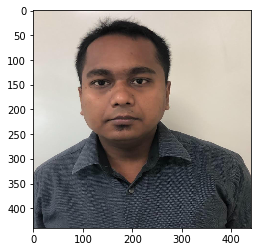What is Image Classification?
Image classification is the process of segmenting images into different categories based on their features. A feature could be the edges in an image, the pixel intensity, the change in pixel values, and many more. We will try and understand these components later on. For the time being let’s look into the images below (refer to Figure 1). The three images belong to the same individual however varies when compared across features like the color of the image, position of the face, the background color, color of the shirt, and many more. The biggest challenge when working with images is the uncertainty of these features. To the human eye, it looks all the same, however, when converted to data you may not find a specific pattern across these images easily.



Figure 1. Illustrates the portrait of the Author taken in 2014 and 2019 respectively.
An image consists of the smallest indivisible segments called pixels and every pixel has a strength often known as the pixel intensity. Whenever we study a digital image, it usually comes with three color channels, i.e. the Red-Green-Blue channels, popularly known as the “RGB” values. Why RGB? Because it has been seen that a combination of these three can produce all possible color pallets. Whenever we work with a color image, the image is made up of multiple pixels with every pixel consisting of three different values for the RGB channels. Let’s code and understand what we are talking about.
import cv2
import seaborn as sns
import matplotlib.pyplot as plt
%matplotlib inline
sns.set(color_codes=True)
## Read the image
image = cv2.imread('Portrait-Image.png') #--imread() helps in loading an image into jupyter including its pixel values
plt.imshow(cv2.cvtColor(image, cv2.COLOR_BGR2RGB))
## as opencv loads in BGR format by default, we want to show it in RGB.
plt.show()
image.shape
#convolutional-network #deep-learning #machine-learning #computer-vision #keras #deep learning